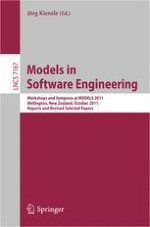This book presents a comprehensive documentation of the scientific outcome of satellite events held at the 14th International Conference on Model-Driven Engineering, Languages and Systems, MODELS 2011, held in Wellington, New Zealand, in October 2011. In addition to 3 contributions each of the doctoral symposium and the educators' symposium, papers from the following workshops are included: variability for you; multi-paradigm modeling; experiences and empirical studies in software modelling; models@run.time; model-driven engineering, verification and validation; comparing modeling approaches; models and evoluation; and model-based architecting and construction of embedded systems.
